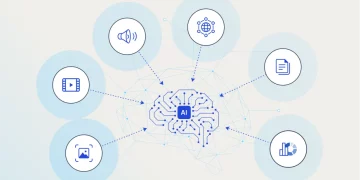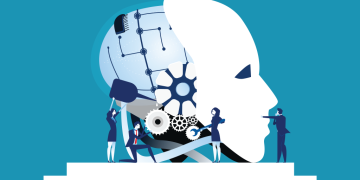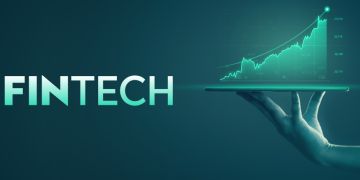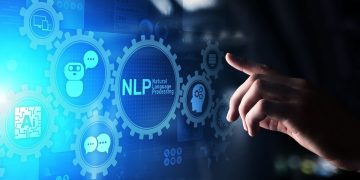The rapid advancements in Artificial Intelligence (AI) are transforming industries across the globe, from healthcare to finance, entertainment to transportation. However, as AI technologies grow increasingly sophisticated, governments and regulatory bodies have begun to scrutinize the potential risks AI poses, such as privacy concerns, algorithmic biases, and unintended societal consequences. While regulation is essential to ensure ethical AI development, it also presents significant challenges for businesses operating within the AI space. The latest AI policies and regulations aim to address these issues, but they bring with them both opportunities and risks. This article delves into how the AI industry is responding to regulatory pressures, what the new policies entail, and the potential benefits and drawbacks they may bring.
The Growing Need for AI Regulation
As AI becomes integrated into nearly every aspect of daily life and business operations, its impact on society is profound and multifaceted. The potential of AI to drive economic growth and improve efficiency is immense, but so too are the risks of unintended consequences, such as reinforcing biases, violating privacy, or exacerbating inequality. As AI systems make increasingly critical decisions—ranging from hiring practices to healthcare diagnostics, criminal justice to credit scoring—the ethical and societal implications are immense.
Regulation has thus become a central focus for policymakers. The primary objective of AI regulation is to balance innovation with responsibility. Governments are under increasing pressure to ensure that AI systems are developed and deployed in a manner that is transparent, accountable, and fair. They must also protect citizens from potential harm and preserve fundamental rights such as privacy and autonomy.
Key Challenges in AI Regulation
- Rapid Technological Evolution vs. Slow Regulatory Processes One of the most significant challenges in AI regulation is the rapid pace of technological change. AI is evolving at an unprecedented rate, with new techniques, algorithms, and applications emerging continuously. However, regulatory frameworks typically evolve much more slowly, often struggling to keep up with the pace of innovation. This mismatch can create a regulatory lag, leaving gaps in oversight and potentially enabling the development of AI systems that operate beyond the scope of existing laws.
- Diversity of Applications and Use Cases AI technologies are highly diverse, ranging from autonomous vehicles and facial recognition to natural language processing and predictive analytics. The varying applications of AI mean that one-size-fits-all regulations are not practical. Different industries require tailored regulatory approaches that consider specific risks and needs. For instance, the healthcare sector’s AI tools will require stricter safety standards than AI used in entertainment or marketing.
- Ethical Considerations: Bias, Privacy, and Accountability AI systems are known to reflect the biases present in the data they are trained on. These biases can manifest in ways that harm marginalized groups or perpetuate existing societal inequalities. Furthermore, AI’s ability to process vast amounts of personal data raises significant privacy concerns. The need to ensure transparency and accountability in AI decision-making processes is critical. However, AI’s “black-box” nature—where it’s difficult to explain how an AI arrived at a particular decision—makes this accountability challenging.
- Global Fragmentation of Regulations AI regulation is still in its early stages, and different countries and regions are adopting their own approaches to managing AI risks. For example, the European Union has introduced the Artificial Intelligence Act, which is among the most comprehensive attempts to regulate AI at a regional level. On the other hand, countries like the United States have largely adopted a more fragmented, sector-specific approach to AI regulation. This fragmentation can create confusion and inefficiencies for businesses that operate internationally, as they may need to comply with varying regulatory standards across different markets.
The Latest AI Policies and Their Impact
In response to these challenges, a number of new policies and regulations are being introduced globally. Here are some of the key initiatives that could reshape the AI landscape:
1. The European Union’s Artificial Intelligence Act
The EU Artificial Intelligence Act (AI Act), introduced in 2021, aims to provide a comprehensive regulatory framework for AI. It classifies AI systems into different risk categories—from minimal risk to high-risk—and establishes specific obligations for each category. High-risk AI applications, such as those used in healthcare, transportation, or law enforcement, will face strict requirements, including transparency, accountability, and human oversight.
Opportunities:
- Standardization of AI practices: The AI Act provides a clear set of rules for companies operating in the EU, which could help create a more predictable business environment. This could encourage innovation, as businesses will have a clearer understanding of what is permissible.
- Public trust: By ensuring that high-risk AI systems are subject to rigorous standards, the AI Act could help boost public confidence in AI, leading to greater acceptance and adoption.
Risks:
- Compliance Costs: For businesses, particularly startups and small companies, the regulatory burden could be significant. Meeting the requirements of the AI Act—especially in terms of transparency, auditing, and documentation—may require substantial investments in legal, technical, and administrative resources.
- Innovation Stifling: There is a concern that overly stringent regulations could stifle innovation by creating barriers to entry, especially for smaller companies or researchers working on experimental AI technologies.
2. The US Approach: Sector-Specific Regulations
In contrast to the EU’s holistic approach, the United States has tended to adopt a more fragmented regulatory framework, with individual sectors developing their own AI policies. For instance, in the financial industry, the Federal Reserve and the Office of the Comptroller of the Currency have provided guidelines for using AI in financial services. Similarly, AI in healthcare is regulated by the Food and Drug Administration (FDA).
Opportunities:
- Flexibility and Adaptability: The US approach allows for more sector-specific flexibility, which can enable quicker adaptation to new developments in AI technology. Each sector can develop rules that are directly relevant to its specific risks and challenges.
- Encouragement of Innovation: A less centralized regulatory framework can potentially promote faster innovation and the growth of AI startups, as companies are not burdened with a broad, one-size-fits-all regulatory approach.
Risks:
- Lack of Cohesion: The lack of a unified framework could result in inconsistent regulations across different sectors and states, making it difficult for companies to navigate the regulatory landscape.
- Privacy and Security Risks: A more fragmented approach may also create gaps in data privacy protections or insufficient oversight of high-risk AI applications, increasing the potential for harmful or unethical AI use.

3. China’s AI Regulation and Ethical Guidelines
China has emerged as a global leader in AI development, and its regulatory stance reflects the country’s strategic focus on controlling AI’s impact on society. The Chinese government has implemented various regulations, including guidelines for ethical AI development and measures to ensure that AI systems comply with national security interests. The Chinese approach heavily emphasizes the control of AI data and algorithmic transparency.
Opportunities:
- Clear Direction for Industry Players: The Chinese government’s active role in AI regulation provides businesses with clear directives, which may help guide industry practices and support China’s ambition to lead in AI innovation.
- Government-Backed Investments: China’s regulatory frameworks often align with government-backed investments, creating opportunities for domestic AI companies to grow under the protection and support of state policies.
Risks:
- Centralization and Lack of Privacy Protections: The Chinese regulatory approach has been criticized for focusing too heavily on state control and surveillance. This could create privacy risks, particularly in sectors like facial recognition and personal data collection.
- Global Tensions: China’s AI policies could create friction with Western governments, particularly around issues of data privacy, cybersecurity, and the ethical use of AI, potentially leading to international regulatory disputes.
The Opportunities and Risks of AI Regulation
The introduction of AI regulations brings both opportunities and challenges for businesses, governments, and individuals alike.
Opportunities:
- Market Differentiation: AI companies that develop ethical, transparent, and responsible AI systems will have a competitive edge, as consumers and businesses alike increasingly value trustworthiness.
- Increased Investment: Clear regulations can encourage investment in AI technologies by providing businesses with a more predictable environment. Investors may feel more confident in backing AI companies that comply with established standards and guidelines.
- Global Collaboration: As AI regulation becomes more global in scope, there is an opportunity for international collaboration on shared challenges, such as ethical AI development and cross-border data protection.
Risks:
- Increased Compliance Burden: Smaller companies and startups may face significant challenges in meeting the compliance requirements of new regulations, potentially limiting innovation or forcing them out of the market.
- Regulatory Overreach: There is a risk that excessive regulation could stifle innovation, particularly in fast-moving sectors where flexibility and rapid development are essential.
- Fragmentation: As AI regulations vary across different countries and regions, businesses that operate globally may face challenges in harmonizing their operations to meet the requirements of multiple regulatory environments.
Conclusion
The AI industry stands at a critical juncture as regulators worldwide begin to establish frameworks to govern the development and use of artificial intelligence. While these regulatory developments present significant opportunities for responsible innovation and global collaboration, they also pose challenges in terms of compliance, privacy, and ethical concerns. For AI companies, navigating the evolving regulatory landscape will require careful consideration of both risks and rewards. As AI continues to shape the future, finding a balance between regulation and innovation will be key to ensuring that AI technologies can deliver their full potential without compromising societal values or safety.











































